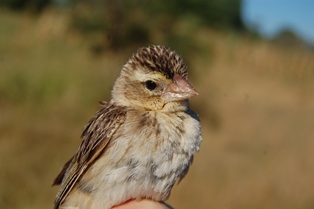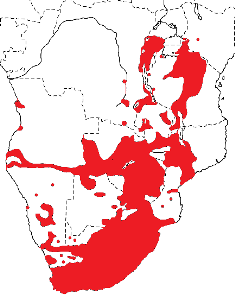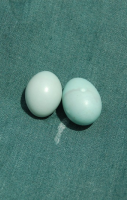Weaver Wednesday [40]: Southern Red Bishop 2013-03-20 (343)
 Weaver Wednesday
Weaver Wednesday

It is National Water Week in South Africa, so this week a typical wetland weaver is featured.


The Southern Red Bishop Euplectes orix is a conspicous wetland species in southern and East Africa (see map below, based on Birds of Africa). The breeding male is generally black and red, with a short tail. Females, non-breeding males and young birds are dull coloured and difficult to distinguish from other bishops and widows. Even the brightly coloured males are similar to other bishop males in breeding plumage. The Southern Red Bishop has a black mask and abdomen, with the crown, throat, breast, rump, upper and under tail coverts red.
The Southern Red Bishop was well known to early travellers and writers. For instance, in 1816 George Shaw wrote: "This species is gregarious, and builds its nest in large societies, among the reeds, near the rivers and ponds in the vicinity of the Cape of Good Hope and St. Helena: the appearance of these birds among the reeds is said to have a most beautiful effect, from the brilliancy of their colours."

Several subspecies of the Southern Red Bishop have been proposed in the past, but none are currently recognised since populations are not reliably separable on measurements nor on plumage characters. It has also been introduced to several countries, eg Australia (see here) and St Helena (unsuccessfully). This species has increased in numbers due to the building of dams and irrigation canals, and expansion of seed crops. Numbers are reduced, however, where wetlands are drained.
The Southern Red Bishop feeds mainly on seeds, and also on insects in summer and when feeding young. 24 seed species, mostly small, were recorded in the Free State, South Africa. Chicks are fed on arthropods including dragonflies, beetles, caterpillars and spiders, and eggshell fragments have been found in chick stomachs. It is a significant crop pest in wheat fields in the south-western Cape, South Africa, where up to 70% of the crop may be destroyed in some fields. Birds generally forage in two sessions daily, morning and late afternoon, and gather in day roosts during the middle of the day.
The oldest bird is over 13 years (see here).
The Southern Red Bishop is polygynous, with up to 7 females nesting in a male's territory at any one time, and up to 18 females in a breeding season. It is colonial, with colonies of several hundred nests in reeds; nests are also found in small groups and sometimes a pair nests solitarily. The nest is an oval, with a side entrance under a porch near the top. The nest is tightly woven of thin strips of reed or grass blades, and lined with plant down and grass seed heads. The nest is built by the male and may be completed in a single day, but usually takes 2-3 days. Initially eggs are visible through the weaving, but as the female adds lining during incubation the nest walls become opaque. The average clutch size is 3 eggs, but the mean clutch size is larger in years of heavier rainfall. The female incubates for only 40% during the day, with bouts in the nest of 1-10 minutes and absences of 1-12 minutes.



Some nest predators that have been recorded are water monitor, egg-eating snake, rats, slender mongoose, Cattle Egret and White-browed Coucal. Old nests used by Tawny-flanked Prinia Prinia subflava, Zebra Waxbill Sporaeginthus subflavus and other species. Climbing mice Dendromus mesomelas take over old nests of weavers, including the nests of Southern Red Bishops. The Southern Red Bishop is a major host to the Diderick Cuckoo Chrysococcyx caprius but high rates of brood parasitism are found only at small colonies where all the territory-holders may be absent at the same time (see here).
The Southern Red Bishop has 209 PHOWN records, spread through southern Africa, but many more PHOWN records are needed for this species (see PHOWN summary). Submit any weaver nest records to PHOWN (PHOtos of Weaver Nests) via the Virtual Museum upload site.
PHOWN summary
Previous Wedn: Asian Golden Weaver
Full weaver species list
|


 Weaver Watch
Weaver Watch


